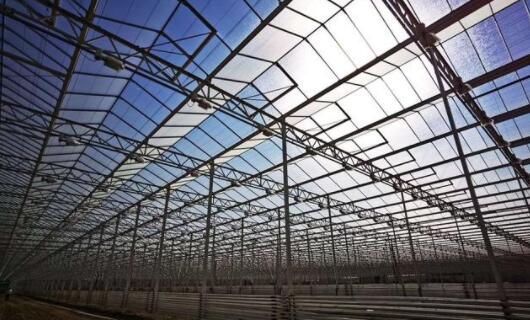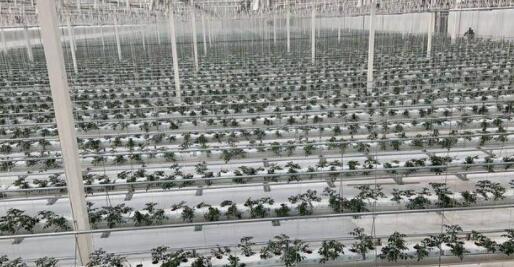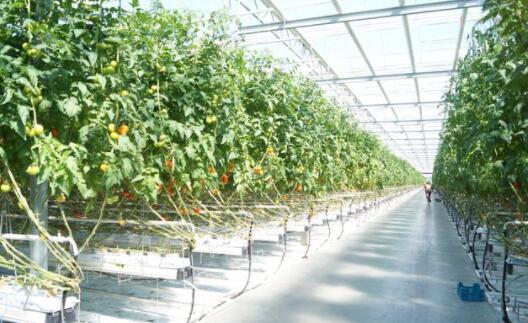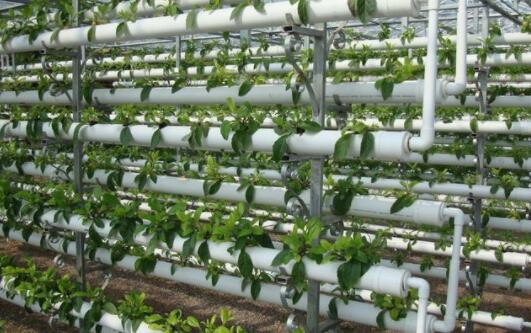
Agricultural glass greenhouse cultivation method-soilless cultivation
When the first glass-covered greenhouse in the Netherlands appeared in 1850, greenhouse cultivation methods were continuously explored and developed. Today, glass greenhouses are semi-mature, and some large-scale operators and small farmers are constantly practicing and exploring greenhouse cultivation. The innovation of technology and the adaptation to the national conditions promote the use.

Evergrande Group Greenhouse Project
Up to now, greenhouse cultivation methods include: off-season cultivation, soft cultivation, promotion cultivation, suppression cultivation, soilless cultivation, etc. Among them, soilless cultivation is the main cultivation method for glass greenhouses and is widely used in the field of high-end agricultural greenhouses.

What is soilless culture
The soilless cultivation method is a method in which the natural soil is not used but the substrate is used, and the nutrient solution is used for irrigation after planting. Artificial soilless cultivation can create a better growth environment for the root system, and prevent diseases, eggs and accumulated pollution in the soil from affecting plant growth. The cultivation substrate material of soilless culture can be recycled, which saves water, fertilizer and has the advantages of high yield.

Characteristics of soilless culture
1. Various nutrient elements required by soilless cultivation plants are transported through nutrient solution delivery pipes, which is convenient for fertilization, and unabsorbed nutrients can be directly recycled without waste.
2. Substrate cultivation is free from soil restrictions, changes the traditional concept, and has a high land utilization rate.
3. Significantly reduce the labor force, while expanding the use rate of water and fertilizer.
4. Reduce the impact of plant diseases and insect pests and prevent the malignant development of pathogen transmission.
5. Soilless cultivation can greatly increase the yield of agricultural crops, and the unit area is 0.4-20 times that of soil cultivation (2-4 times for general crops), and the worst is more than 30%.
6. Soilless cultivation helps to provide the level of agricultural production automation.
Difficulties of soilless culture
The biggest difficulty of soilless cultivation lies in the difficulty of nutrient solution management and high technical requirements. Many small companies do not have knowledgeable talents for greenhouse operations.
What equipment is needed for soilless cultivation
Substrate cultivation equipment: cultivation tanks, cultivation bags, liquid storage tanks, liquid storage tanks, drip irrigation systems, etc.
Hydroponics demand equipment: cultivation tank, storage tank, nutrient solution circulation system (water pump, liquid supply pipeline, return pipeline), PH controller, conductivity meter.

Equipment for spray cultivation: seedbeds, cultivation racks, planting plates, cultivation pipes and nozzles, seedbed return, piping systems, nutrient solution pools, water pumps, filters, strong magnetic processors, nutrient solution sterilizers, ultrasonic atomizers, electric functions Water equipment, electric field generator, sponge seeding block and other systems.
What kind of substrate is good for greenhouse soilless cultivation
Common substrates for soilless culture: rock wool, peat, vermiculite, perlite, slag, sand, carbonized rice husk, mushroom residue, reed powder, coconut bran, foam plastic, composite substrate;
Recommended formula for composite matrix
Peat: Vermiculite=1:1
Peat: sawdust=1:1
Peat: Vermiculite: Sawdust=1:1:1
Peat: Vermiculite: Perlite=1:1:1
Recommended other solid cultivation substrates
Expanded pellets, sawdust, bark, bagasse, rice husk, rotting leaves, straw, cow dung (grass seeds inactivated)
Tags:anti-reflective glass diffuse glass agricultural greenhouses glass greenhouse venlo greenhouse AR glass greenhouses glass agricultural glass horticultural glass #greenhouseglass #Antireflectiveglass #Diffusetemperedglass #Ultrawhitefloatglass #agriculturalgreenhouseglass #diffuseglass #horticulturalglass #Tomatogreenhouse #Coloredpeppergreenhouse #Lettucegreenhouse #Agriculturalgreenhouse #ARglass #venlogreenhouse #greenhouseglass #Antireflectiveglass #Diffusetemperedglass #Ultrawhitefloatglass #agriculturalgreenhouseglass #diffuseglass #horticulturalglass #Tomatogreenhouse #Coloredpeppergreenhouse #Lettucegreenhouse #Agriculturalgreenhouse #ARglass #venlogreenhouse #GlassManufacturer #invernadero #ArchitecturalGlass #ClearFloatGlass #FloatGlass
Previous:What are the covering materials for the greenhouse?
Next:Why is greenhouse diffuser glass more expensive than ordinary glass?



















